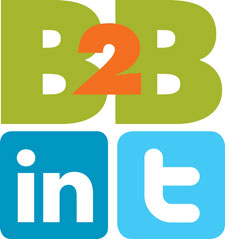
Believe it or not, the US government is using social media … not all agencies, but two in particular.
LinkedIn and Twitter have made it as business-to-business tools in government contracting circles, according to Do?a Storey, American Express OPEN Advisor on Procurement and President and CEO of Quality Technical Services, Inc.
LinkedIn and Twitter have taken the lead over Facebook for B2B because they are more information-based, targeted, and somewhat less personal than Facebook, Storey says.
Only a minority of small business owners recognize the importance of social media to the growth of their businesses, according to Ditch Digital Dabbling: How Small Businesses + Nonprofits Can Master Online Marketing, a recently released report on data gathered by Ventureneer and Message Medium.
Storey is among those who have found that the time and cost bring real results.
“You have the advantage of forming groups with a common interest,” she says. “Everyone can play in that same sandbox.” Experts, from government procurement people to experienced contractors, chime in to answer questions and suggest solutions to problems.
One such group is the American Express OPEN Victory in Procurement. Like other LinkedIn groups, there’s no cost to join but you get access to people and discussions that can inform, guide, and inspire.
And to share news about products agencies are looking for, such as the search for computer desks by the military academy at West Point, or advice about how to make your road to a government contract easier from staff at the government agencies.
Updates on such things as changes to contracts come more quickly via Twitter although they are also posted on agency websites, as required by law.
Storey is enthusiastic about LinkedIn because it has helped her find people with whom she’d like to do business — or from whom she’d like advice — and, by participating in discussions, she lets people know who she is and what she can do, a great way to be noticed.
“LinkedIn has been amazing,” she says.” I try to help and people gravitate to me.”
For women, LinkedIn is especially useful. “I think women are shy in promoting themselves. Men have no problem saying [they are really great],” she says. “Women have no hesitation about being able to help someone. For women, LinkedIn is a wonderful platform to show what you know without looking like you are bragging.”
Large corporations are also using LinkedIn to build B2B relationships, Storey says, especially if they already use social media to build relationships with their customers.
Diversity managers at both governments and corporations appreciate the ease of finding women- or minority-owned businesses.
To reap these benefits, small businesses must:
- Post an up-to-date capacity statement on your company page. Include any special certifications, the size and scope of contracts managed, and agencies or corporations you’ve worked for. Caution here, though, Story warns. Don’t make it easy for the competition to target your market. Do not put in contacts for previous customers, the dollar amount of the contract or the revenue you earned.
- Make sure your LinkedIn profile includes keywords that businesses and government agencies will use when searching for a supplier, especially keywords like “women-owned” or “minority-owned.”
- Use LinkedIn for their own research about companies or agencies you want to work with or to see who’s giving good information in discussion groups.
- Use LinkedIn as one level of networking. It does replace face-to-face meetings but may lead to some. And it certainly doesn’t replace a well-groomed website.
With Twitter or LinkedIn, she checks in while eating lunch. “The learning is tremendous,” Storey says. “In 10 or 15 minutes, you can check the various groups you have an interest in. It’s amazing how much you can pick up while having that tuna salad sandwich.”
It’s a matter of dollars and cents, Storey says. She goes where her customers are. And her business customers are on LinkedIn and Twitter.
Where are yours? Check out what groups your customers are in, whether a particular contractor, corporation or government agency. Then join in the conversation.
The online marketing survey, Ditch Digital Dabbling: How Small Businesses + Nonprofits Can Master Online Marketing, gathered extensive data and benchmarks about how small businesses and nonprofits use online marketing and whether they are seeing results. For highlights, visit our website.
